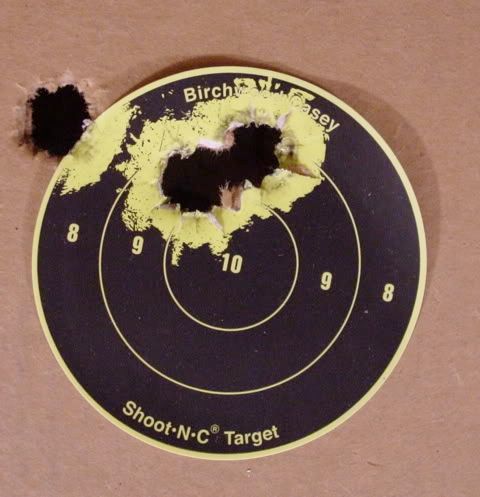R.M. said:
Dan Phariss said:
Hardened lead was the historical standard for MLs, smooth or rifled, used for heavy game.
Dan
Does anybody have any firm documentation on this, or is this just another internet myth?
Inquiring minds need to know.
The myth is that pure lead must be used for RBs in ML arms. Its simply not true. In fact MLs will shoot hard lead just fine but barrels with really deep grooves and wide lands load very hard with hard lead. So they "need" pure lead.
Barrels like Green Mountain will load WW about like pure lead. I have a 16 bore with very narrow lands and all I change is the patch. With pure lead I use a heavy cotton ticking patch, with WW, which cast larger, I use a thinner linen patch.
Both shoot to the same point of aim and with equal accuracy.
Deer, elk, moose, bear, lion or tiger are not "heavy" game. But if I were shooting a G.Bear with my 16 bore rifle I would likely use WW balls. Which it shoots as well as pure lead, maybe even better BTW.
If you read ANYTHING concerning hunting in Africa or India you will find hardened lead, usually hardened with mercury was the standard. Pure lead will not penetrate adequately on large game, period. The lead bullet breech loaders also used hard lead for this purpose. Turner Kirkland found this out when he went to Africa and shot an Elephant with a pure lead from a 4 bore. Penetration was poor about 20" IIRC. Had he read Sir Samuel Baker or Forsythe he would have known better.
You can go to Google books and find "The Sporting Rifle and Its Projectiles" bu James Forsythe. Then down load some of Sir Samuel Baker's books. "With Rifle and Hound in Ceylon" has been in print recently and might be found on Amazon or other book outlets.
Then read "Pondoro" by John Taylor where he describes killing 14 "good bulls" (African Elephant) and several rhino with a smoothbore 10 bore percussion gun with 6 drams (165 gr) of powder. He was forced to quit using it when the supply of hardened balls was exhausted. This was in the *1930s* when a ammunition shipment for his modern rifles was lost in transit.
Dan
This a 50 yard target fired with my 16 bore rifle (.662 ball). The left hole is pure lead, the right hole is WW and the middle hole is a pure lead ball shot in a paper cartridge with no patch just the ball in the paper.





